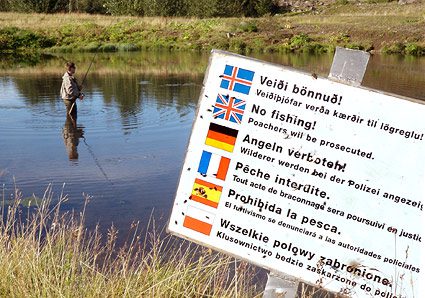Wednesday September 1, 2010

Anglers around the world are faced with reduced freshwater fishing opportunities and access to rivers. Although many European countries posses “freedom to roam” policies and laws, landowners in some countries retain hunting and fishing rights. For example, everyone in Norway has the right to access and pass through private land, as long as they don’t pass next to a house or through cultivated land, however, the landowner holds the rights to freshwater fishing. Interestingly, fishing rights in Wales can be bought, sold and leased; therefore, a landowner can own the land while no longer possessing the fishing rights.
In the US most rivers are considered ‘navigable waterways’. Although many landowners may not be aware, the public has the right to use all running waters for activities such as boating, fishing, and hiking along the banks. The riverbeds and banks up to the ordinary high water line are considered public land (Frank 1983). Despite the public right to fish a navigable waterway, there may not be public access to get to the river, since private property rights protect landowners from trespass on uplands.
We took this picture in Iceland this past week where an angler at first appeared defiant of the rules. However, this angler, like most in Iceland, has paid between 300-500 USD for the privilege of fishing this stream for a day. Landowners of each watershed form associations to manage fishing access to the rivers. The fishing associations offer the right to fish each river and determine the maximum number of rods per day for each reach. The best salmon rivers can cost 1,000-1,500 USD per day for a single rod, but that usually includes a fishing guide, transportation, food and accommodations. Trout fishing is becoming more popular and can be accessed for 40-310 USD for one rod per day. The Icelandic government has few laws for salmon fishing, but the fishing associations determine additional regulations such as catch and release, fishing hours, and gear type.
Photo source: FISHBIO
